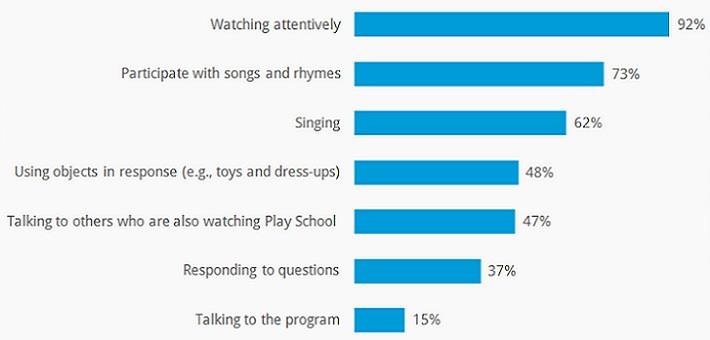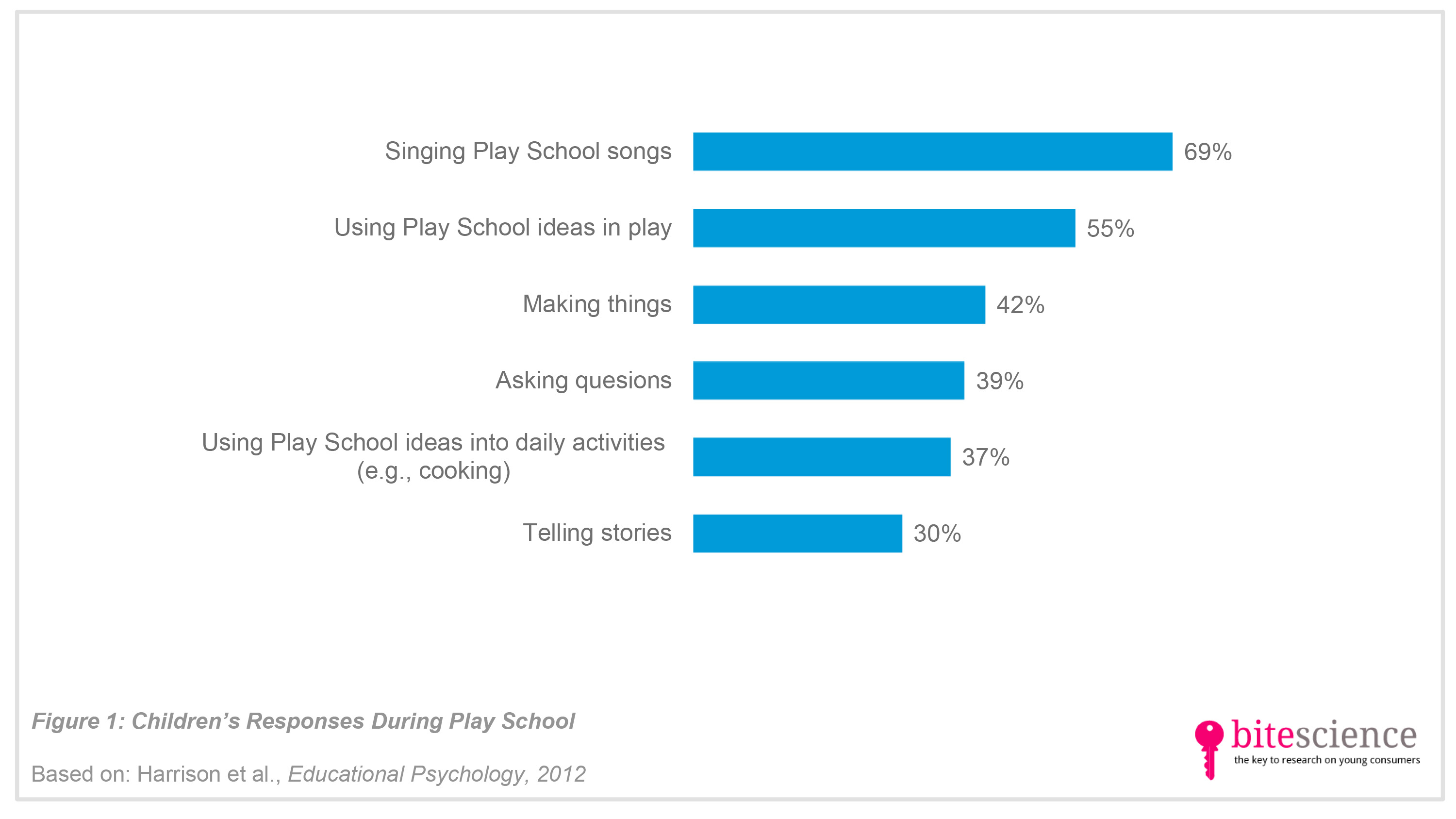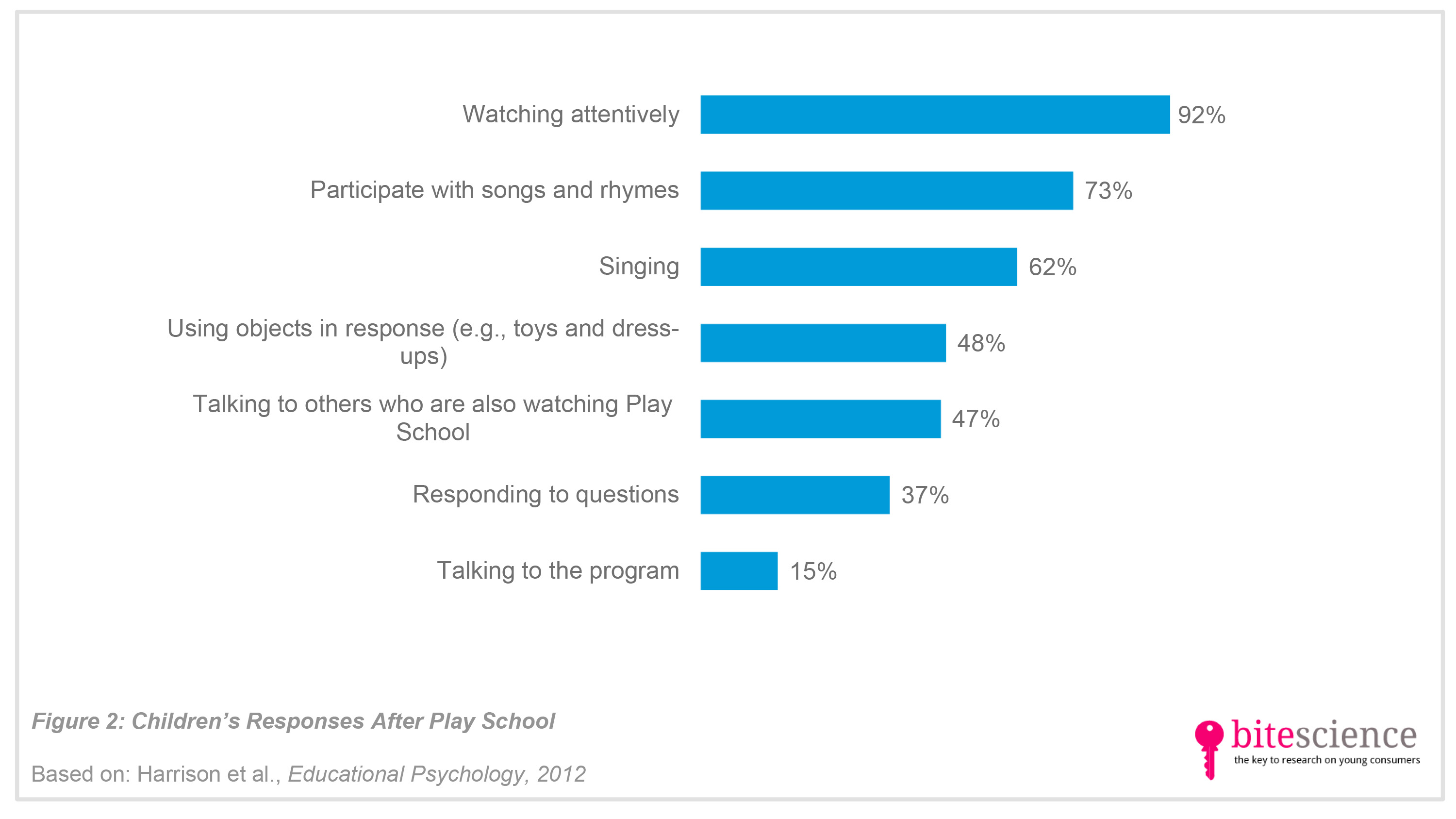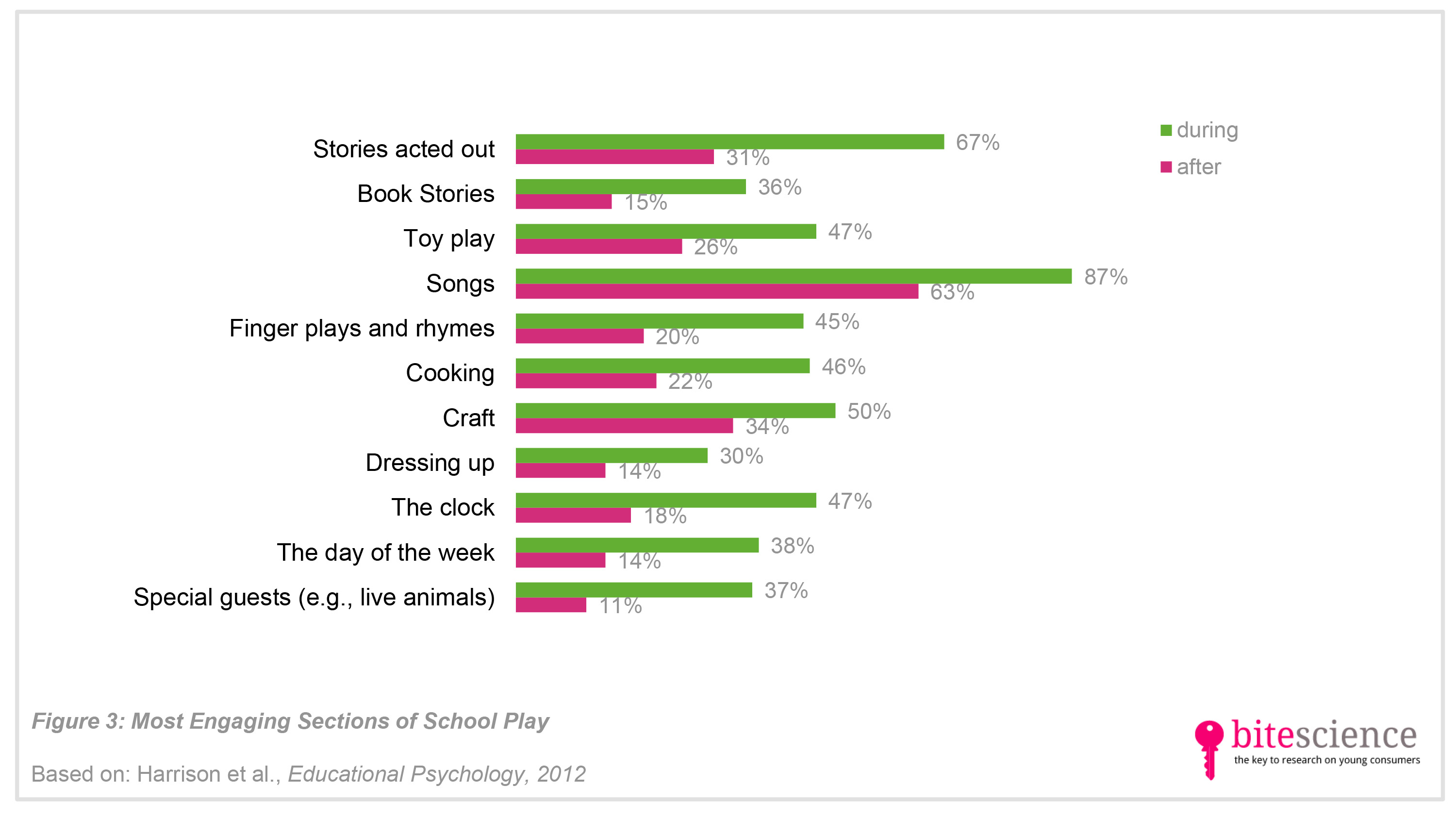
Wonder, Think, Feel, Imagine: Educational TV Show 'Play School' Stimulates Positive Play
Ipad, games, social media: there are plenty of new media education tools, but good ol' television also still does the trick.Television can be a fine teaching tool, since there are many television shows that are informative and educational. Take the Australian educational program Play School, for example. A study in Educational Psychology shows that Play School stimulates positive play (e.g., signing, dressing up, and storytelling) in children, not only during but also after the program.
Take aways
- The Australian educational television program Play School elicits a variety of positive play-based behaviors (e.g., signing, dressing up, and storytelling) in children.
- Children are engaged and active during Play School.
- The impact of the program continues even after viewing.
- For educational program makers, Play School may serve as an example of how to create an effective educational program for young children.
Study information
The question?
Does Play School elicit play in young children during and after watching and which sections of the program are most engaging to the children?
Who?
224 adult parents and caretakers of 1-to 8-year olds (95% of the adults and 60% of the children were female).
Where?
Australia
How?
Parents and caretakers of the children completed an online questionnaire via a link on the Play School website. Play School is an Australian television program designed for viewing by young children (3-5 years) and their family that aims to engage the child in a range of creative play and problem-solving experiences. The questionnaire contained questions about the behaviors of the child during and after watching Play School and which sections of the program were most appealing to the child.
Facts and findings
- The types of behaviors observed during and after watching Play School reflected play-based behaviors.
- Almost all children watched Play School attentively and the majority responded to the television program by language or movement (see Figure 1 ).
- In addition, 69% of the children sang the Play School song and 30-to -55% made other Play School-related responses after the program (see Figure 2).
- Children who often accessed other Play School mediums (e.g., Play School website and books) were more likely to respond actively during the program.
- Older children were more engaged during and after the program.
- All sections of the program were engaging to the children (see Figure 3).


